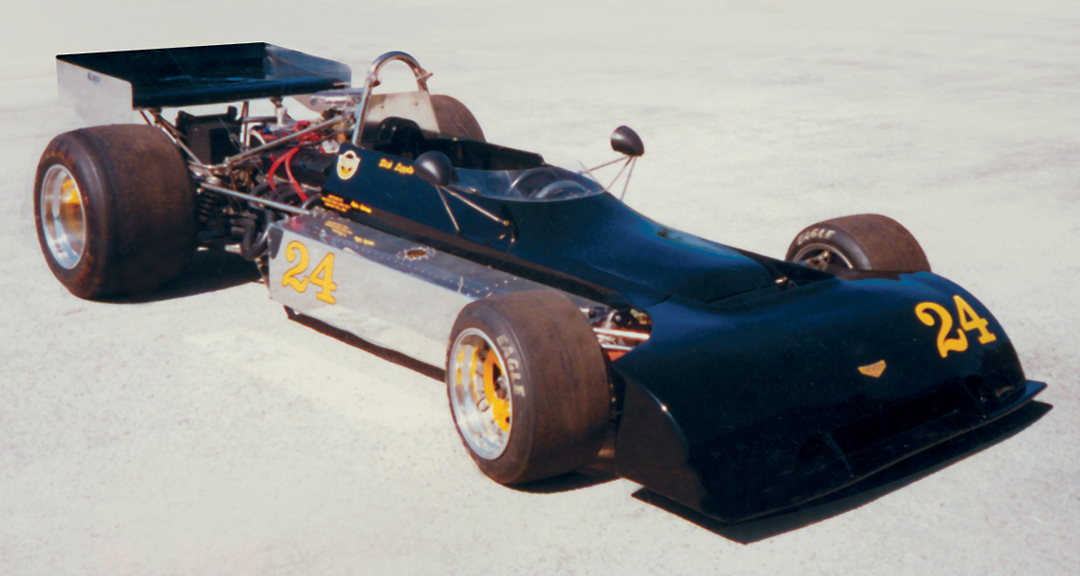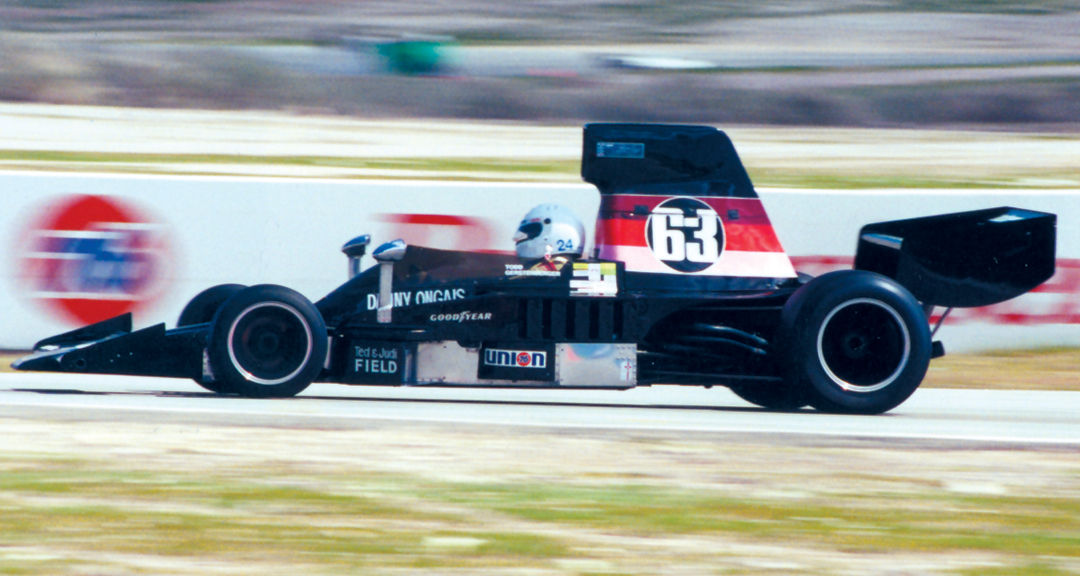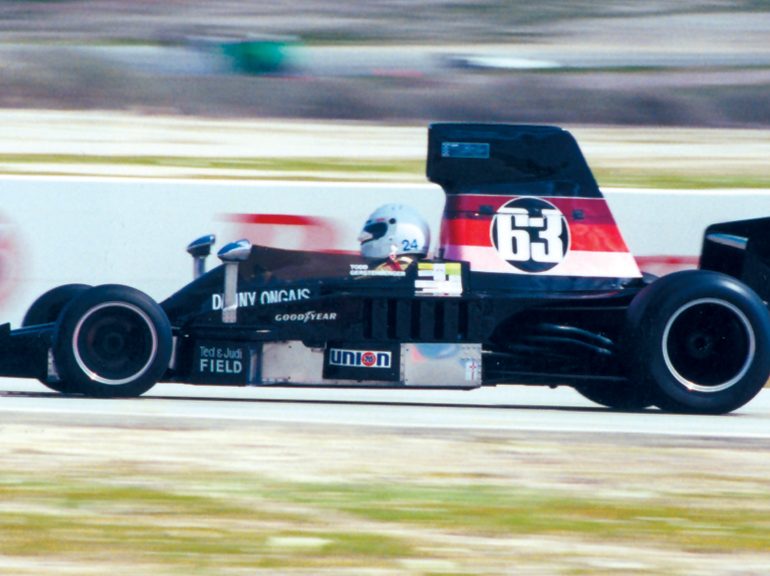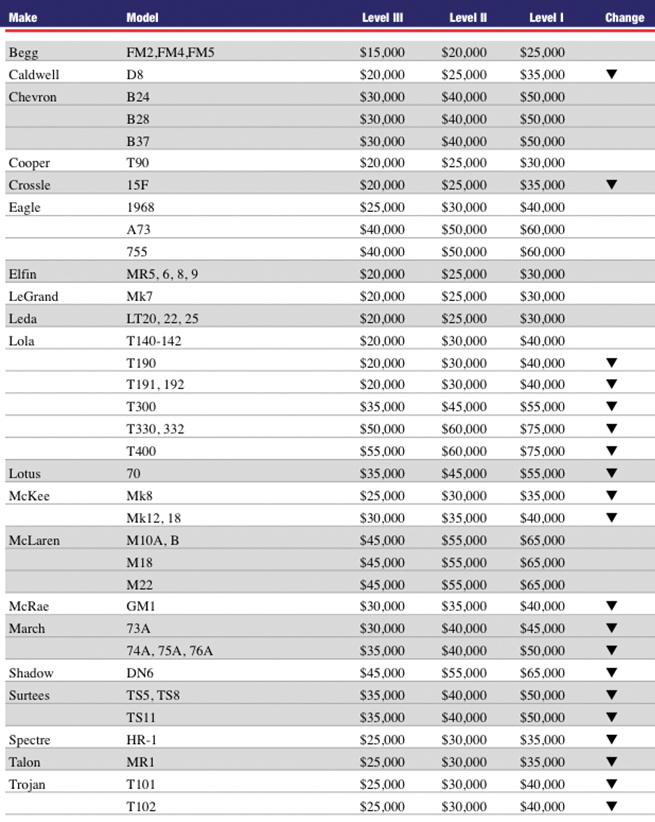Formula 5000 was a racing series for open-wheel, single-seater racing cars built to a specific set of rules. The engine of choice was the venerable small block Chevrolet V8 of 5.0 liters displacement. It started as a bright idea in 1967 and ran successfully until politics between the governing body, race organizers, and team owners did it in at the end of the 1976 season.
Although there were four competitive Formula 5000 championships: the Rothmans series in Europe, the Tasman series in Australia and New Zealand, and the Tarmac series in Britain, the heart and soul of Formula 5000 was the North American series. In the early 1970’s it was known as the L and M Championship after title sponsor L and M Tobacco. In 1974, the SCCA and rival governing body USAC joined forces to run Formula 5000. A variety of chassis manufacturers took part, but the car that dominated the later years of the series was the Lola T332. Even though the rules allowed the turbo-charged Offenhauser engine to run, the engine that dominated the series was the Chevrolet 5.0 liter V8 which could put out a reliable 550 bhp and 425 lbs-ft of torque at 8000 rpm. In fact, it would have been an all Chevrolet victory season if not for Jackie Oliver winning two races in a Dodge V8-powered Shadow DN6.
Even though many top drivers such as Mario Andretti, Mark Donohue, David Hobbs, James Hunt, Alan Jones, Jackie Oliver, Jody Schecker, and Al Unser took part, the dominant driver one associates with Formula 5000 is Brian Redman who won the championship in 1974, 1975, and 1976. Notably, the First Long Beach Grand Prix in 1975, promoted by Chris Pook, was for Formula 5000 cars.
Today, Formula 5000 cars represent a lot of racing performance for ones’ money. In fact, one of the most important factors in determining value is the cost and quality of the restoration.
F5000s have eligibility under the Monoposto register’s Formula 70 rules in America, with FORCE in the U.K. as well as with many historic clubs around the world.
Chevron B24

Lola T332

Criteria Used For Assessing Valuations for this Guide:
- Degree of Originality
- Overall Condition, Restoration
- Technology, Design, Coachbuilder
- Production Numbers/Rarity
- Competition History
- Ownership History, Documentation
- Modern Event Eligibility
Regional Variances
The prices stated in this guide are based on U.S. values. The values of historic racing cars can vary as much as 25%-35% in other countries, depending on local market appeal, currency rates, import duties, and VAT. Most of the time, we are able to document known sales or closed escrows, as they say in real estate. When this is not possible, a logical estimate of the car’s value is given, based on its sales history and relationship to cars of its type.
The prices stated in this guide are based on U.S. values. The values of historic racing cars can vary as much as 25%-35% in other countries, depending on local market appeal, currency rates, import duties, and VAT.
LEVEL |
VALUATION CATEGORIES |
|---|---|
I |
The best combination of all criteria. |
II |
Satisfies mid-range of criteria. |
III |
In need of restoration. Meets only a few points of criteria |





